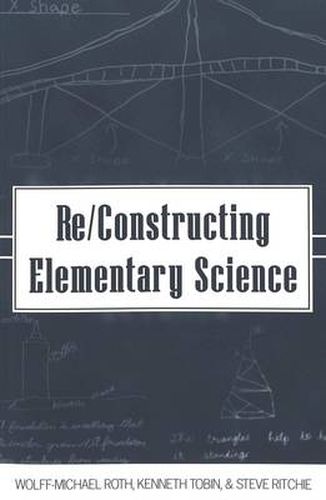Readings Newsletter
Become a Readings Member to make your shopping experience even easier.
Sign in or sign up for free!
You’re not far away from qualifying for FREE standard shipping within Australia
You’ve qualified for FREE standard shipping within Australia
The cart is loading…






Re/Constructing Elementary Science seeks to improve the way science is taught in the elementary school. There are three main contradictions that make it difficult for teachers and students to engage in meaningful activities from which understandings result. The central issues in this book are framed in terms of three dichotomies that lead to tensions arising from the dialectic of opposing aspects of teaching and learning. First, there is a tension between learning as an individual process (cultural production) and as a cultural process (cultural reproduction). Second, there is a tension between science and technology (applied science). Finally, there exists a tension between children’s interaction with nature and their language for describing and explaining nature. Exemplary case studies are featured that show the tremendous capabilities of elementary students to talk about technology and, in the process, to learn to talk science. These case studies are couched in an ongoing professional dialogue among the authors and the requirements to make such exemplary science happen in other classrooms.
$9.00 standard shipping within Australia
FREE standard shipping within Australia for orders over $100.00
Express & International shipping calculated at checkout
Re/Constructing Elementary Science seeks to improve the way science is taught in the elementary school. There are three main contradictions that make it difficult for teachers and students to engage in meaningful activities from which understandings result. The central issues in this book are framed in terms of three dichotomies that lead to tensions arising from the dialectic of opposing aspects of teaching and learning. First, there is a tension between learning as an individual process (cultural production) and as a cultural process (cultural reproduction). Second, there is a tension between science and technology (applied science). Finally, there exists a tension between children’s interaction with nature and their language for describing and explaining nature. Exemplary case studies are featured that show the tremendous capabilities of elementary students to talk about technology and, in the process, to learn to talk science. These case studies are couched in an ongoing professional dialogue among the authors and the requirements to make such exemplary science happen in other classrooms.